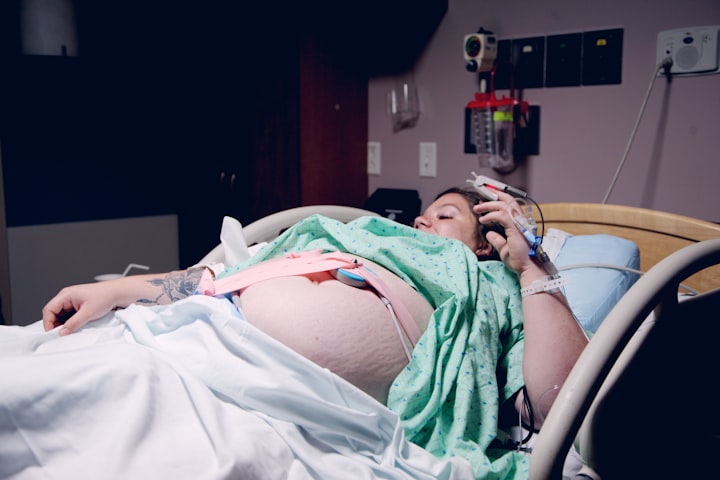Induction of Labour Part 2: A Buffet of Choice
Types of induction; "Natural" induction; Before You Are Induced

I recommend you read my Part 1 on induction if you haven't already.
A Buffet of Choice
I sometimes describe induction of labour like a buffet. There are several options on the table, and you're likely to have a combination of them. That combination will depend on your circumstances.
Please keep in mind that what combination is offered varies depending on where you are. Hopefully, this piece will help to give you an idea.
The Disclaimer
I recommend you speak to your doctor or midwife as well, to get a fuller picture. Doing your own reading is worthwhile, but is no substitute .
The types of induction
I think of this as the "menu". There are 5 kinds of medical induction:
- Membrane sweep
- Pessary or gel
- Foley catheter
- Breaking your waters (Artificial Rupture of Membranes, or ARM)
- Drip (Syntocinon via IV)
How can I induce labour naturally?
My opinion is: when induction is necessary, it should usually happen with the support of medical professionals. In many cases, "natural" induction just won't work. In some cases, it may pose a risk to you or your baby. Often, it just frustrates you and wears you out before the process has truly begun. Here is what you can do instead!
The Cervix Check & The Bishops Score
It sounds like a really crap Harry Potter rip-off, doesn't it?
I think of these as the appetisers - something offered before the main meal induction. While I believe cervix checks generally have limited value, this is a time when they are more useful. They help you and your doctors or midwives gain a fuller picture of what is happening at the moment, and therefore the likely next best steps.
There are several things a health care professional is looking for when she checks your cervix. She can tell many things about your's baby's position for example, as well as the progress of your cervix. For a Bishop score, she is looking for five things:
- dilation (openness)
- effacement (how thin it is)
- consistency (its squishiness)
- position
- baby's station (how low s/he is)
These things are each assigned a number, and those numbers are added together. The higher it is, the more likely that labour will begin soon, or that induction will be successful. If your cervix is not showing any signs of readiness, you might be offered a pessary or gel to help it to soften.
Membrane sweep
Some will claim this is not a form of induction, but rather a means to avoid induction. False! This is a form of induction in its own right. I think of this as the light bite on the menu. You might have it as a starter, or you might just have it on its own. It's often the first thing offered if you're at (or near to, or beyond) 40 weeks of pregnancy.
The Process
- Your midwife should discuss this with you beforehand and gain your informed consent.
- Wearing gloves, your midwife inserts two fingers and if possible, runs them around the cervix to seperate the membranes from it
- The goal is to stimulate the release of oxytocin by irritating the cervix
- It is also known as a sweep, a stretch and sweep, or sweeping the membranes
Note: If you consented to a cervix check (vaginal exam, "VE") and the midwife tell you afterwards she "just did a sweep while she was in there" please complain. Staff really must not be doing this; it is a form of assault. They must be discussing with you exactly what they are going to be doing beforehand. Literally before-hand - before they do it. To be honest - before they put their gloves on!
Note: You may withdraw consent at any time for any reason without justification, and the person doing the sweep must stop immediately. You are having something inserted into the most intimate and private part of your body - your consent is paramount. This also applies to cervix checks. I recommend Mary Cronk's Phrasebook.
The Pros
- It might work! You might go into labour within a day or two.
- It might help avoid other forms of induction
- It is generally safe in most circumstances. (Of course, nothing is 100% risk-free, and your perceptions of the risks are important.)
- This Cochrane review showed that a sweep could help promote the onset of labour and maybe avoid other types of induction. (Worth noting - they didn't find any clear difference in unassisted vaginal births, caesarean section, instrumental vaginal births or serious illness or death of the mother or baby). that having a sweep can shorten pregnancy slightly (just a couple of days).
The Cons
- It can be uncomfortable for many women
- It may cause some spotting and cramping
- It might cause prodromal labour - ie. stop-start contractions that don't go anywhere and tire you out
- As with anytime something is inserted into your cervix and furtled about, there is some chance of infection. This is higher if your waters have released. By its very nature, this procedure has to side step all the protective measures your body has put in place to prevent infection.
- There's a chance of your waters being released during the process (there are a whole bunch of considerations if that happens).
Another consideration: Many women credit the sweep for starting labour, rather than their own body and baby doing exactly what they perfectly capable of doing. Ubiquitous sweeps perpetuate - and are symptomatic of - a culture of inherent mistrust in the female body to perform its basic functions. To me, this is no small thing!
Ripening the cervix
If your cervix is not ready for labour, you might be offered a pessary or gel to help it begin to soften. Remember: there is no point inducing contractions if the cervix is not soft enough to open in response. I think of this as the starter. It's almost always followed by something else.
The pessary or gel contains prostaglandins. These shorten and soften the cervix.
You might be encouraged to go home while you wait for it to work. This can vary between hospitals. It also depends on your well-being, and whether any monitoring of your baby has showed they are doing well. It's a good idea to discuss this with your providers beforehand so you have an accurate idea of what to expect.
Further reading:
I recommend Inducing Labour by Dr Sara Wickham
I will describe the other types of induction in my next piece - please consider subscribing so you are notified when it goes up.
Wise ones - have you been induced? What was your experience?
Thank you so much for reading!
_________________________
Book Your Class:
About the Creator
Sam The Doula (Blooming Miracle)
Childbirth Eductator since 2011
Building a resource for mothers-to-be to feel informed and confident about their choices
You can find me on Facebook or book classes with me






Comments
There are no comments for this story
Be the first to respond and start the conversation.